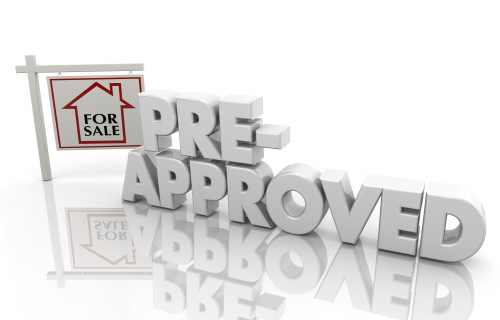Mortgage Pre-Approval: This is How to Get Pre-Approved
 Want to buy a house? You may consider getting a mortgage preapproval before you start shopping for a home. Why? Because it will show buyers that you’re a serious homebuyer and ready to make a move.
Want to buy a house? You may consider getting a mortgage preapproval before you start shopping for a home. Why? Because it will show buyers that you’re a serious homebuyer and ready to make a move.
Keep reading to learn more about getting preapproved for a mortgage.
What is a Mortgage Preapproval?
A mortgage preapproval letter is something you receive after a lender has checked out your financial history, including pulling your credit report and score. The letter indicates the type and amount of loan you qualify for along with the lending terms.
Why Do You Want to Get a Mortgage Preapproval Letter?
When you get a mortgage pre-approval letter, it makes it easier for you to shop for homes within your budget. It also shows the seller that you’re a serious homebuyer. The letter also helps you find a mortgage lender who’ll work with you to get the best home loan with home financing terms and an interest rate that works for you.
Get a Pre-Approval with These Tips
Before you start shopping for your new home, check out these preapproval mortgage tips.
Know Your Credit Score
Do you know your credit score? It’s a good idea to know it before you reach out to a lender. Experts state that a credit score of at least 620 is recommended, and the higher your score means you’ll qualify for a better rate. Most borrowers with a credit score of 740 or above usually qualify for the best rates.
Check Your Credit History
If you’re not checking your credit history, it’s time to start. Get copies of your credit reports, review them, and question and correct any errors you find. Resolve all issues before getting a mortgage pre-approval.
Gather Your Financial Data
To get pre-approved for a mortgage, you and or your co-borrower or co-signor (if you have one) will have to show the following:
- Social security numbers
- Current address
- Employment details (address, salary, pay stubs, W-2 forms, etc.)
- Taxes
- Bank and investment account information
- Additional income sources
Lenders look for at least two years of continuous employment, but there may be exceptions. For instance, if you’re self-employed, you’ll have to provide two years’ worth of income tax returns. If your downpayment comes from a gift, trust fund, or sale of an asset, you’ll have to show the paper trail to prove it.
Calculate Your Debt-to-Income Ratio
Find your DTI (debt-to-income) ratio dividing your monthly debt payments by your gross monthly income. You’ll get a percentage that represents how much goes towards paying your debts, such as car loans, credit cards, and student loans. Your debt-to-income ratio tells lenders how well you manage to pay your bills and if you can afford to repay a loan.
What to Do Before Getting Pre-Approved for a Mortgage
If you think you’re not financially ready to buy a home, you may consider getting a mortgage pre-qualification, which is an informal evaluation of your finances. You provide a lender with information about your credit, debt, income, and assets, and a lender estimates whether or not you’ll qualify for a mortgage and how much money you may be able to borrow.
At FFCCU, we offer our Dare2Compare account review. When you schedule a time with one of our friendly teammates, they’ll review your finances to see where they may save you money. If you can trim your interest and finances charges, it may improve your financial outlook.
Are You Ready to Get a Home Loan?
Keep in mind that a pre-approval mortgage letter is usually good for 90 days. However, check the expiration date to make sure. If you’re ready to buy a home, contact us about a mortgage loan. We’ll walk you through the process every step of the way and do our best to help you get the best rate.
Did you like this post? Share it and sign up here to receive helpful information each month right in your inbox.
Posted In: Home Buying, Mortgage




